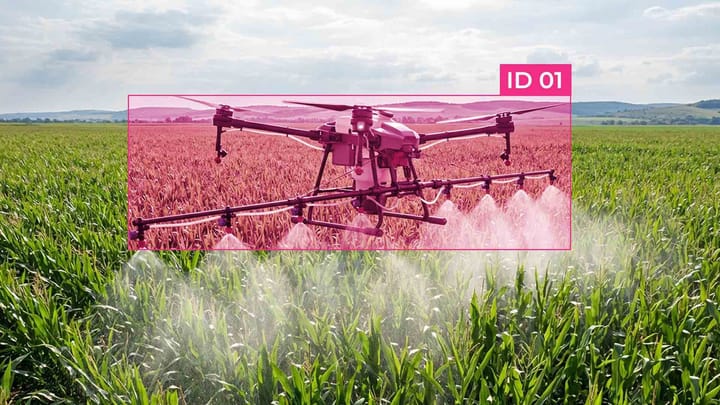Multimodal fusion strategy optimization for business AI

In today's business world, AI is becoming a fundamental tool for improving efficiency, automating processes, and making informed strategic decisions. Companies are utilizing AI to analyze vast amounts of data, forecast demand, personalize products, and optimize their supply chains. AI is also helping to support customers by automatically processing requests and improving service quality.
Auspicious is the use of multimodal data that combines text, images, sound, and other sources of information through feature fusion. Multimodal AI systems allow companies to gain a comprehensive understanding of customer behavior, market trends, and operational efficiency. Early fusion and late fusion approaches are employed to integrate various types of data, along with attention mechanisms, which enable more accurate and contextualized analysis.
Current trends in multimodal fusion optimization for business AI
It focuses on increasing the accuracy of analysis and speed of decision-making by effectively combining different data sources. Using feature fusion enables you to combine text, visual, and audio data into a single representation, providing a deeper understanding of customer behavior and market trends. Early fusion methods integrate different types of data at the early stages of processing, which improves the consistency of information. In contrast, late fusion enables the combination of results from individual models, allowing for more flexible decision-making. Attention mechanisms are actively used, which highlight the most relevant data elements and increase the accuracy of forecasts. Current research also focuses on automatic optimization of fusion strategies, which allows businesses to adapt AI models to changing market conditions and data specifics.
Emerging patterns in data fusion techniques
- Expanded use of feature fusion. Companies are actively combining text, visual, and audio data into a single representation for more accurate analysis of customer behavior and market trends.
- Popularization of early fusion and late fusion. Early fusion integrates different types of data at the early stages of processing, ensuring consistency of information. In contrast, late fusion allows for combining the results of individual models, providing more flexible and scalable analysis.
- Integration of attention mechanisms. Attention mechanisms highlight the most relevant data elements in multimodal streams, thereby increasing the accuracy of forecasts and reducing noise in complex datasets.
- Adaptive optimization of fusion strategies. Modern systems automatically select the optimal integration method based on the type of data and business tasks, enabling faster responses to market changes.
- Hybrid approaches to multimodal integration. By combining multiple fusion techniques, including feature fusion, attention mechanisms, and various early and late integration schemes, more reliable and accurate results can be achieved for complex business analytics tasks.
Impact on business performance
Optimizing multimodal data integration has a direct impact on business efficiency, increasing the accuracy of analytics and speed of decision-making. Using feature fusion enables companies to combine different data sources, providing a deeper understanding of customer needs and market trends. Early fusion and late fusion methods help integrate information at various stages of analysis, improving the quality of forecasts and adaptability of business processes. Attention mechanisms help highlight the most critical information, thereby increasing the accuracy of recommendations and reducing the cost of erroneous decisions.
Understanding multimodal fusion optimization
Feature fusion enables you to combine text, images, audio, and other types of data into a single, comprehensive representation, facilitating in-depth analysis. Early fusion approaches integrate data at the initial stages of processing, thereby increasing the consistency of information. In contrast, late fusion combines the results of individual models to facilitate more flexible and scalable analysis. The use of attention mechanisms helps to highlight the most relevant data elements, increasing the accuracy of predictions and recommendations. Optimizing multimodal integration allows businesses to make more informed decisions and respond more effectively to market changes.
Deep learning and Machine Learning approaches in fusion
In the context of multimodal data integration for business, the application of deep learning enables the solution of complex analytical tasks that were previously inaccessible to traditional methods. Feature fusion based on deep learning enables the creation of single feature vectors that combine text, visual, and audio information, preserving significant correlations between different data types. Early fusion methods allow the integration of data at the input feature level, providing a more consistent representation for neural networks. In contrast, late fusion combines the results of individual models, offering flexibility and reducing the risk of losing specific information from each modal channel. Attention mechanisms, particularly in transformers, highlight relevant elements in data streams, enabling the system to focus on the most critical information for prediction or recommendation.
Modern approaches include hybrid architectures, which combine classic ML models with deep neural networks, increasing the robustness and accuracy of multimodal solutions and also allowing them to be scaled for various business scenarios, from marketing analytics to supply chain management.
Neural networks and adaptability
Neural networks work effectively with feature fusion, combining text, visual, and audio data into a single feature vector, enabling more accurate predictions and recommendations. Early fusion approaches in neural networks allow data to be integrated at the input feature level, resulting in a more consistent and comprehensive representation of information. At the same time, late fusion enables the combination of results from separate models, thereby increasing the system's flexibility and robustness to noise or data scarcity in a particular modal channel. Attention mechanisms significantly enhance the adaptability of neural networks, enabling them to focus on the most relevant aspects of the data.
Hybrid models for enhanced learning
Hybrid models combine the advantages of classical machine learning and deep neural networks for more effective multimodal data integration in business. Using feature fusion, such models can combine text, visual, and audio data into a single representation, while preserving the specificity of each modal channel. Early fusion approaches in hybrid systems enable the integration of different data types at the input feature level, resulting in a consistent and multifaceted representation of information. Late fusion provides flexibility by combining the results of individual models, which is especially important for business analytics, where data may be incomplete or heterogeneous.
Comparative analysis of early, late, and sketch fusion techniques
Late fusion advantages
In late fusion, different modal streams are processed by separate models, and the results are combined at a later stage, for example, through averaging or weighted voting. This approach provides greater flexibility and allows combining models trained on heterogeneous or incomplete data. Late fusion is robust to noise in individual modalities and enables the easy addition of new data sources without requiring retraining of the entire system. It is well-suited for business analytics, where data originates from various channels, including social media, CRM systems, and visual sensors. The primary disadvantage is the potential loss of cross-modal information, which is challenging to account for during the stage of combining results.
Early Fusion Insights
In the early fusion approach, different types of data (text, images, audio) are integrated early in the processing, before the model starts training. This enables a single, consistent representation of features, providing a deeper understanding of correlations between modalities. Early fusion works well with deep neural networks, as they can detect complex relationships between different data sets. However, this method is sensitive to noise and data format incompatibility, so it requires careful preparation of the input features. It is effective for tasks where all modalities are present and have a high degree of consistency, such as customer behavior analytics in complex marketing campaigns.
Benefits of Sketch Representation
Sketch fusion is a novel approach that combines the advantages of early and late integration by creating a simplified or "sketch" representation of each modality before merging them. This technique reduces the size of the data and speeds up model training while preserving key correlations between modalities. Sketch fusion is often employed in scenarios where computing resources are limited or large amounts of data are present, such as in real-time recommender systems or supply chain management. It combines the flexibility of late fusion with the versatility of early fusion, providing a balance between accuracy and speed. The primary challenge is to create the sketch representation accurately, ensuring that critical information is not lost for predictions.
Summary
Optimizing multimodal data integration is crucial for enhancing the effectiveness of business AI, as it enables the combination of diverse information sources to yield more accurate predictions and recommendations. Feature fusion approaches provide a comprehensive representation of data. In contrast, early fusion integrates modalities at early stages for in-depth analysis, while late fusion combines the results of individual models, thereby increasing the flexibility and robustness of the system. The use of attention mechanisms allows you to highlight the most relevant data elements, which is especially important for dynamic business scenarios. Current trends include hybrid models that combine classical machine learning and deep neural networks, as well as sketch fusion approaches that provide a balance between accuracy and computational efficiency.
FAQ
What is feature fusion in multimodal AI?
Feature fusion combines multiple data types (text, image, audio) into a single representation for comprehensive analysis.
How does early fusion work?
Early fusion integrates different data types at the input stage, creating a unified feature set for model training.
What is late fusion?
Late fusion combines the outputs of separate models, allowing flexible integration of heterogeneous data.
What are attention mechanisms used for in multimodal fusion?
Attention mechanisms highlight the most relevant parts of data, improving prediction accuracy and context understanding.
Why are hybrid models important in business AI?
Hybrid models combine machine learning and deep learning approaches to enhance accuracy, adaptability, and scalability.
What is sketch fusion?
Sketch fusion creates simplified representations of each modality before combining them, balancing speed and accuracy.
How does multimodal fusion impact business performance?
It improves decision-making, forecasting, customer understanding, and operational efficiency.
What are the main challenges of early fusion?
Late fusion is useful when data sources are heterogeneous, incomplete, or subject to continuous change.
When is late fusion preferred over early fusion?
Late fusion is useful when data sources are heterogeneous, incomplete, or subject to continuous change.
How do neural networks enhance adaptability in multimodal AI?
Neural networks, especially with attention mechanisms, adapt to complex patterns across modalities and dynamic business scenarios.



Comments ()